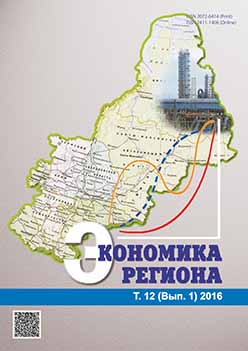Анализ миграционных процессов по данным переписей населения в России
The Analysis of Migration Processes in Russia According to the Census
Author(s): Olga Dmitrievna Vorobieva, Anatoly Vasilyevich Topilin, Aleksandr Aleksandrovich Grebenyuk, Tamara Vasilyevna LebedevaSubject(s): Economy, Geography, Regional studies
Published by: Институт экономики Уральского отделения Российской академии наук
Keywords: internal migration; migration in Russia; census of population; interregional migration; economic regions of Russia; rural-urban migration; urbanization; natives and non-natives; old-timers; settlers;
Summary/Abstract: The subject matter of the study is the internal migration of the Russian population from 1960 to 2010. The study is basedon the information about the spatial population movements, published in the proceedings of the all-Union censuses of 1970,1979, 1989, and of the all-Russian censuses of 2002 and 2010. The main flows and directions of migration are considered.The methodological analysis of the migration was performed by means of cross-cutting indicators to assess the dynamics ofmigration processes over a long period. Special attention is given to the rural-urban internal migration, as its volumes, patternsand impacts have not been adequately tested and evaluated to date. Relative indicators, which have not been used previouslyto assess the studied processes are proposed and calculated. To ensure the comparability of the materials of the censuses of theSoviet and post-Soviet periods under consideration, the economic zoning adopted prior to 2000 was used, and the uniformity ofadministrative scale was ensured. The hypothesis that from decade to decade, there was a decrease of the intensity of territorialmobility for both urban and rural populations is confirmed. The inter-regional migration flows are considered; the differenttrends and intensity of migration processes for more than four decades are specified. The dynamics of the structure of migrantson the basis of length of residence in the place of permanent residence in different regions is analyzed. The study has shown thatthe development and preservation of the prevailing trends in that period continues to adversely affect the territorial distributionof the population and the regional socio-economic development of the country. The findings can find their application in thecorrection of regional socio-economic and migration policies.
Journal: Экономика региона
- Issue Year: 12/2016
- Issue No: 1
- Page Range: 175-188
- Page Count: 14
- Language: Russian

